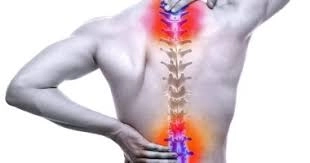
Spinal Cord Injuries: Can Movement Be Regained? With Dr. Ahmed Saeed
Published on: 2025-06-26 | Written by: Dr. Ahmed Saeed, PhD in Neurosurgery and Spine Surgery
Spinal cord injuries are among the most serious neurological traumas, potentially resulting in partial or complete paralysis depending on the severity.
Dr. Ahmed Saeed, Consultant Neurosurgeon, explains that advancements in diagnostics, surgery, and rehabilitation have brought real hope to patients for regaining some or even full motor function.
What Causes Spinal Cord Injuries?
According to Dr. Ahmed Saeed, spinal cord injuries are commonly caused by:
-
Traffic accidents or falls
-
Sports or violent injuries
-
Tumors or infections affecting the spinal cord
-
Severe disc herniation or chronic spinal compression
Symptoms vary depending on the level and extent of injury and may include sensory loss, muscle weakness, and issues with bladder, bowel, or breathing functions.
Does Every Injury Lead to Permanent Paralysis?
Not necessarily. Dr. Ahmed Saeed explains that spinal cord injuries are classified as:
-
Complete: No motor or sensory function below the level of injury.
-
Incomplete: Some function remains, offering better recovery potential.
Accurate neurological assessment using MRI and nerve conduction studies helps determine the chances of recovery.
Modern Treatments for Spinal Cord Injuries
Dr. Ahmed Saeed applies a range of treatment options tailored to each case, including:
-
Urgent surgery to relieve pressure or stabilize the spine
-
Medications to reduce inflammation and prevent further nerve damage
-
Neurological rehabilitation including physiotherapy, occupational therapy, and psychological support
-
Stem cell therapy, which is still under research in some advanced centers
Is Movement Recovery Truly Possible?
Yes, in many cases. Dr. Ahmed Saeed notes that patients who receive early intervention and undergo intensive rehabilitation are more likely to regain movement, especially in cases of incomplete injuries.
Conclusion
Although spinal cord injuries can be life-altering, accurate diagnosis, timely surgical intervention, and comprehensive rehab can significantly improve outcomes. With Dr. Ahmed Saeed’s expertise in spinal and neurosurgery, patients can receive personalized care plans that offer real chances of regaining independence and mobility.

